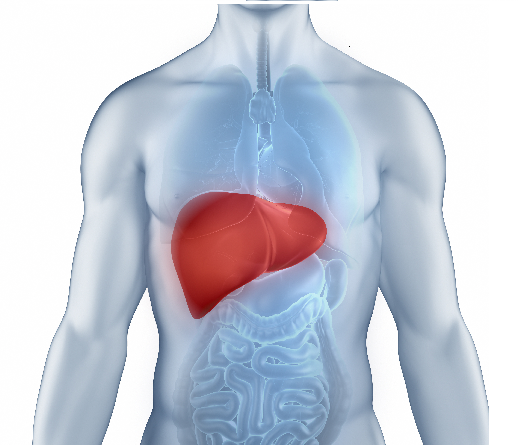Hemophilia: Causes, Symptoms & Diagnosis

Blood contains plasma proteins that cause it to clot in cases of cuts and injuries. However, people suffering from hemophilia disease have a deficiency of these essential proteins, which affects their blood’s ability to clot and causes excessive bleeding.
According to The Week, India has the second-largest population of patients living with hemophilia, with roughly 1.3 lakh cases. However, experts believe that the numbers are underreported, as many cases go undiagnosed due to poor availability of proper medical facilities.
What is hemophilia disease?
Hemophilia is a rare genetic disorder that hinders the blood’s ability to clot properly. It’s caused by a deficiency or absence of blood clotting factors (plasma proteins), primarily Factor VIII, Factor IX, and Factor XI. These proteins are essential for blood clotting in response to injuries.
In most patients, hemophilia occurs because they inherit mutated genes from either one or both parents. However, there are rare instances where a person may acquire hemophilia due to drug reactions, cancer, autoimmune conditions wherein the immune system destroys clotting factors, etc.
It primarily affects males because the genes responsible for producing clotting factors are located on the X chromosome. Since males only have a single X chromosome, they exhibit hemophilia if it carries a mutated gene.
In contrast, females have two X chromosomes. If one chromosome carries a mutated gene, the other makes up for it. Hence, female patients often show milder or no symptoms.
What are some types of hemophilia disease?
Three types of haemophilia that affect humans are:
- Hemophilia A
Deficiency of Factor VIII causes Hemophilia A. It is the most common type of haemophilia. According to the Centers for Disease Control and Prevention (CDC), Hemophilia A affects 1 in every 5,000 births of people assigned male at birth.
- Hemophilia B
Hemophilia B, or Christmas disease, is caused by a deficiency of Factor IX. According to the CDC, it is four times less common than Haemophilia A.
- Hemophilia C
Hemophilia C is the least frequent type of hemophilia, affecting 1 in every 100,000 people, according to the National Bleeding Disorders Foundation. It is also known as Rosenthal syndrome and occurs due to deficiency or absence of Factor XI.
What causes hemophilia in humans?
Here are some common hemophilia causes:
- F8 Gene Mutation (Hemophilia A)
The F8 gene, present on the X chromosome, contains instructions for creating Factor VIII. Mutations in this gene cause a deficiency or total loss of Factor VIII, causing Hemophilia A. Patients can inherit an X chromosome with a mutated F8 gene from either of their parents.
- F9 Gene Mutation (Hemophilia B)
The F9 gene is another gene located on the X chromosome and carries instructions for creating Factor IX. Inheriting an X chromosome from either of the parents with an abnormal F9 gene results in Hemophilia B.
- F11 Gene Mutation (Haemophilia C)
The F11 gene is present in Chromosome 4 and is responsible for creating Factor XI. Unlike Hemophilia A and B, Hemophilia C occurs when patients inherit mutated genes from both parents.
What are the symptoms of hemophilia?
Patients with mutated clotting factor genes can experience the following hemophilia symptoms:
- Prolonged bleeding after cuts, surgeries, and injuries.
- Severe pain and swelling due to bleeding in ankles, knees, and elbow joints.
- Bleeding after vaccinations or intravenous injections.
- Bleeding gums.
- Presence of blood in urine and stool.
- Prolonged and frequent nosebleeds.
- Bruises from minor bumps or injuries due to bleeding under the skin.
- Bleeding in the muscles and soft tissues.
- In severe cases, haemophilia can cause bleeding inside the skull. This may also lead to symptoms like headaches, vomiting, lethargy, and double vision.
How to diagnose hemophilia disease?
Doctors perform a series of tests for hemophilia detection among patients. These include:
- Medical History: Doctors review patients’ medical history, including family history of haemophilia or other bleeding disorders.
- Physical Examination: Tests for hemophilia begin with a physical body check-up to examine signs of excessive bleeding, bruises, and swollen joints.
- Complete Blood Count (CBC): Doctors also conduct CBC tests to measure the level of clotting factors present in the patient’s blood.
- Clotting Tests: These include specialised tests, such as the prothrombin time (PT) and activated partial thromboplastin time (aPTT), which measure the time it takes for blood to clot.
- Joint X-rays: Doctors may also perform X-rays of joints to assess damages caused by bleeding.
- Genetic Testing: Finally, doctors perform genetic testing to verify the diagnosis and identify the exact type of haemophilia affecting the patient.
Even though hemophilia is a rare condition, it has a severe impact on a patient’s health. By rendering the blood incapable of clotting, it causes prolonged bleeding, bruises on the skin, and swelling and pain in joints.
Hemophilia patients must consult a medical professional and book a test with Dr. Lal PathLabs to manage the condition efficiently.
FAQs
1. What is hemophilia caused by?
Hemophilia is primarily caused by a deficiency or absence of clotting factors (proteins that help the blood clot) in the blood due to genetic mutations.
2. How is hemophilia detected?
Hemophilia can be detected through blood tests measuring clotting factor levels and genetic testing to identify mutations in clotting factor genes.













